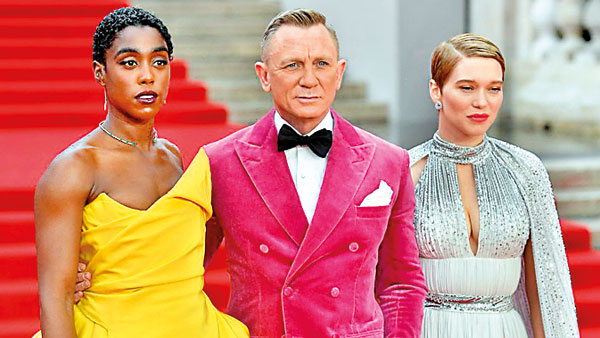Why ‘No Time to Die’ is really a remake of the greatest Bond film of all
View(s):No Time to Die –director Cary Joji Fukunaga’s long-awaited entry in the James Bond series – opened last week to deservedly glowing reviews. “Extravagantly satisfying” was Robbie Collin’s verdict for The Telegraph, and he spoke for the multitude.
 Fifty-two years ago, however, one of its predecessors, On Her Majesty’s Secret Service, had barely a sliver of such good fortune. “I fervently trust this will be the last of the James Bond films,” thundered one broadsheet critic on its release in December 1969. It was one of the more damning reviews of the sixth official James Bond film, but by no means the only one, with critics taking issue in particular with George Lazenby, the man who had taken over from Sean Connery as Bond.
Fifty-two years ago, however, one of its predecessors, On Her Majesty’s Secret Service, had barely a sliver of such good fortune. “I fervently trust this will be the last of the James Bond films,” thundered one broadsheet critic on its release in December 1969. It was one of the more damning reviews of the sixth official James Bond film, but by no means the only one, with critics taking issue in particular with George Lazenby, the man who had taken over from Sean Connery as Bond.
Although On Her Majesty’s Secret Service made $65 million worldwide, confirming it as one of the biggest films of 1969, this figure was half of You Only Live Twice’s total earnings two years earlier (and that, in turn, had made less than 1965’s Thunderball. In other words, something seemed to have gone wrong, and for many years the film was considered something of a blip, a strange anomaly sandwiched between the tail-end of Connery’s pantherine hunter-killer reign and the entertaining levity of Roger Moore’s.
What a difference a half-century makes. Watch it now, and you may find yourself wondering whether On Her Majesty’s Secret Service isn’t among the best Bond films of all: for its still-unrivalled ski chases and fight scenes, its sonically and visually marvellous opening credits sequence, an all-time-best Bond score by John Barry, and a terrific heroine in Diana Rigg’s Tracy.
However, OHMSS’s greatest trick – and the reason that Inception and Dunkirk director Christopher Nolan is said to rank it as his favourite in the series – is the unprecedented cleverness with which it balances romance and thrills. Lazenby’s was the first Bond, for all his toughness, to break the ultimate 007 taboo and fall in love. And – aided 35 minutes in by Barry’s sublime, specially-written song for Louis Armstrong, We Have All the Time in the World – the film allows him and Rigg’s Tracy (ultimately, one of Bond’s most stylish and resourceful women, and the only heroine to actually marry him) plenty of time to do so. Not until Casino Royale did Bond fall in love again (with Eva Green’s Vesper Lynd) – and in Spectre, he went and did it again (with Léa Seydoux’s Madeleine Swann).


